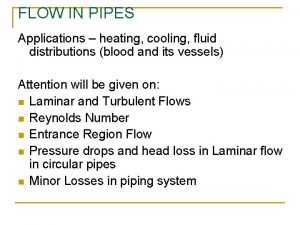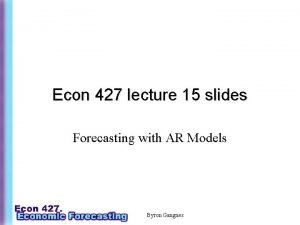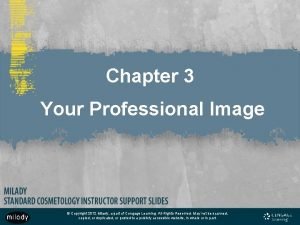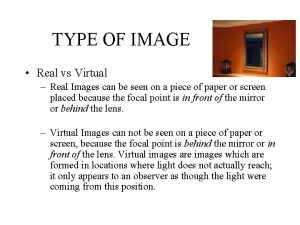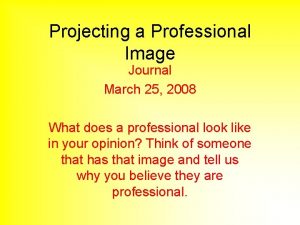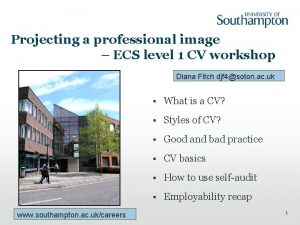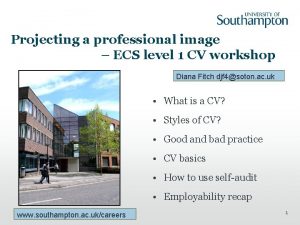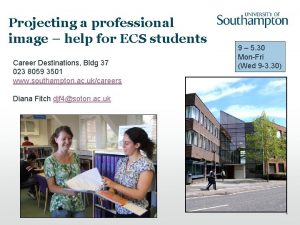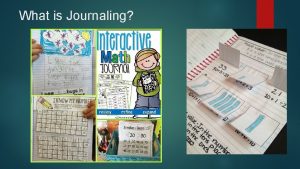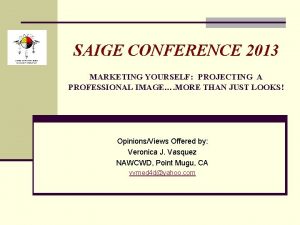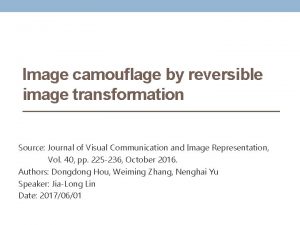Projecting a Professional Image Journal 2 1 What


















- Slides: 18

Projecting a Professional Image Journal 2. 1 What does a professional look like in your opinion? Think of someone that has that image and tell us why you believe they are professional.

Characteristics of a professional image Confidence Poise Professional Image Immediacy Assertiveness

Confidence • A strong voice with an attentive and positive attitude

Poise • To be in control of your communication and situation.

Assertiveness • A strong sense of purpose and self confidence

Immediacy • Approachable, friendly and open

Characteristics of Voice • Pitch • Volume • Duration

Nonverbal Speech • Pauses and Silence • Laughter • Vocalizations

Body Talk Personal Appearance Kinesics Nonverbal Communication Gestures Facial Communication

Personal Appearance • How you dress and how you groom yourself

Kinesics • The use of the body during communication – Posture – Muscular tone and tension

Facial Communication • The look on your face

Movement and Gestures – The way you walk or move from one place to another. Gait. – Movement that reinforces or substitutes for speech

Nonverbal communication Time Spatial Environmental Cues Others

Spatial • Space and Distance – Intimate distance: 18 inches – Personal distance: 18 inches to 4 feet – Social distance: 4 to 12 feet – Public Distance: 12 to 25 feet

Spatial • Territory – Organization • Touch – Handshakes, hugs, pats and other forms of affection

Time Your time management shows how you value yourself and others Think of your day as slices of time. – 8 hours of work/school – 8 hours of sleep – 8 hours for other commitments

Others • Artifacts – Articles of adornment used to decorate yourself and your surroundings. • Fragrance and Odor – Smell is believed to provide the most direct link to the emotion center of our brain.
 Projecting mountain ridge
Projecting mountain ridge Inward projecting pipe entrance
Inward projecting pipe entrance Projecting
Projecting Fluid mechanics
Fluid mechanics Transference
Transference Twd
Twd Professional image definition
Professional image definition What are the four main attributes of professional image
What are the four main attributes of professional image Ergonomics milady
Ergonomics milady Maintaining a professional image
Maintaining a professional image Real vs virtual
Real vs virtual Real vs virtual image
Real vs virtual image Image transform in digital image processing
Image transform in digital image processing Noise
Noise Image compression in digital image processing
Image compression in digital image processing Image segmentation in digital image processing
Image segmentation in digital image processing Analog image and digital image
Analog image and digital image Image compression model in digital image processing
Image compression model in digital image processing Image sharpening and restoration
Image sharpening and restoration

